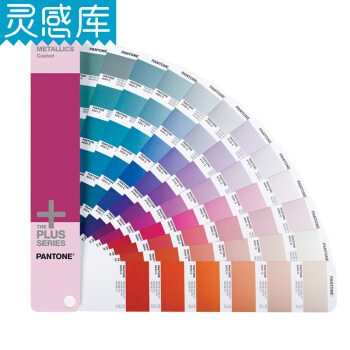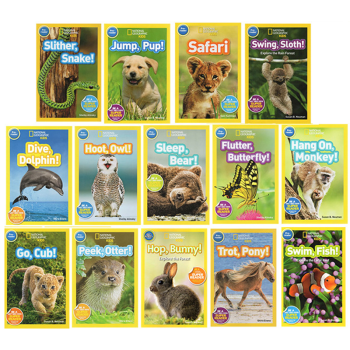![Mieko and the Fifth Treasure 英文原版 [平装] [9岁及以上]](https://pic.windowsfront.com/19140983/b994a45d-add2-4137-84a1-4ce548b08561.jpg)

具体描述
内容简介
When the bomb was dropped on Nagasaki, Mieko's nearby village was turned into ruins. She and her parents were lucky to have survived, but Mieko's hand was badly injured. Mieko loves to do calligraphy more than anything, but now she can barely hold a paintbrush. And she feels as if she has lost something she can't paint without-the legendary fifth treasure, beauty in the heart. Then she is sent to live with her grandparents and must go to a new school where the children tease her about her scarred hand. But Mieko is brave and eventually learns that time and patience can help with many things, and may even help her find the fifth treasure... Staying with her grandparents after the atomic bomb has been dropped on Nagasaki, ten-year-old Mieko feels that the happiness in her heart has departed forever and she will no longer be able to produce a beautiful drawing for the contest at school.精彩书评
Publishers Weekly The devastating effects of the bombing of Japan described in Coerr's Sadako and the Thousand Paper Cranes are evoked here in the stirring story of Mieko, a gifted calligrapher and artist. After her hand is badly injured in the bombing, the frightened and embittered girl is sent to stay with her grandparents in the country. Mieko fears she has lost the fifth treasure, the ``beauty in the heart'' which holds the key to her artwork. At her new school, she is taunted by some cruel classmates, and the anger she feels only deepens her sense of misery and loss. Eventually, she is lifted from her dark state by the patience and wisdom of her comforting grandparents and through the friendship of Yoshi, a gentle classmate. Mieko's recovery is further aided by Yoshi's Aunt Hisako, a stern but generous woman who goads Mieko into picking up her brushes once more. (Hisako's disappearance from the story proves mildly confusing, leaving her more of a device than a fleshed-out character.) Overall, this is a sensitively and beautifully crafted story that juxtaposes the strength of Japanese art and philosophy with the complex emotional wake of the bombing. Once again, this author has created a vivid portrait of courage, drawn from a time that deserves to be remembered. Ages 7-11. (Apr.) Children's Literature Mieko and the Fifth Treasure finds a heroine whose hand is crippled by the Nagasaki bomb. A skillful word-picture artist, Mieko, can work with brush, ink stick, ink stone and rice paper, but she struggles to find the fifth treasure "beauty in the heart." It is the friendship and loving support of those around her that allow Mieko to escape her bitterness and draw with her heart. Fewer Reviews School Library Journal Gr 3-5-- The four treasures of traditional East Asian calligraphy are brush, inkstick, inkstone, and paper. The ``fifth treasure,'' as Mieko's art teacher has told her, is beauty in the heart, which breathes life into writing word-pictures (characters). Mieko lived in a village outside Nagasaki when the atom bomb was dropped. Flying glass badly damaged her writing hand and now, a few months later, she has been sent to live with her grandparents. Ashamed of her scars and certain she has lost the fifth treasure, Mieko withdraws into herself, rejecting school and her grandparents' efforts to help her heal psychologically. It is the subtle, beneficial influence of her new friend, Yoshi, and her overbearing aunt that helps Mieko overcome her fears and start to face life again. The child's inner and outer conflicts are believably handled, and readers will identify with her struggle towards normalcy after trauma. Much of the plot is obvious, but satisfying. The meeting with Yoshi's aunt is especially heavy-handed. With the plot unfolding in the months immediately after surrender, with Tokyo in ashes, rationing for nearly a decade, the collapse of the economy, and U. S. occupation forces just settling in, the fact that she blithely orders (and receives) luxury writing paper is a strain on credibility. Otherwise, this is a warm, sensitive, and well-written story with wide appeal. --John Philbrook, San Francisco Public Library前言/序言
用户评价
这本书带给我的是一种前所未有的阅读体验。作者的文字功底非常深厚,每一个字都恰到好处,每一个句子都仿佛经过精心打磨。我特别喜欢书中对于未知世界的探索,那些充满想象力的设定,让人忍不住想要一探究竟。角色之间的互动非常有意思,他们的对话充满了智慧和幽默感,让我读得津津有味。这本书不仅仅是一个故事,它更像是一扇窗户,让我看到了不一样的世界,学到了不一样的东西。我喜欢书中关于成长和勇气的议题,它们能够很好地引导年轻的读者去思考自己的人生。我强烈推荐这本书给所有对奇幻冒险和深刻主题感兴趣的读者,相信你们也会像我一样,深深地爱上它。这本书的结尾也处理得非常巧妙,留下了一些值得回味的空间。
评分这绝对是一本让我爱不释手的书,我迫不及待地想和所有人分享我的阅读体验!故事的展开方式简直太巧妙了,作者用一种非常引人入胜的方式,将读者带入了一个充满神秘和冒险的世界。我特别喜欢书中角色的塑造,他们不仅仅是书页上的文字,而是仿佛活生生的人,有着自己的喜怒哀乐,他们的成长和转变让我感同身受。每一次阅读,我都能发现新的细节,感受到作者在叙事上的用心。书中的情感描写也十分细腻,有些地方让我眼眶湿润,有些地方又让我心潮澎湃。更重要的是,这本书传递了一种非常积极的价值观,关于勇气、友谊以及坚持不懈的重要性,这些都深深地触动了我。我10岁的女儿也读了,她完全被吸引住了,每天都缠着我要继续讲下去。这本书的插图也非常精美,为故事增添了许多色彩和想象力,每一页都像一幅画一样,让人赏心悦目。总而言之,这是一次令人难忘的阅读之旅,我强烈推荐给所有喜欢精彩故事的孩子们!
评分这本书简直是一个奇迹!我几乎是废寝忘食地读完了它,完全沉浸在了故事的世界里。作者构建了一个如此宏大而又细节丰富的世界观,每一个设定都充满了想象力,让我大开眼界。我特别喜欢书中那些充满智慧的对话,它们不仅仅是简单的交流,更蕴含着深刻的哲理,让我忍不住停下来思考。角色的发展弧线非常吸引人,他们面对困境时的坚韧和成长,都让我深受鼓舞。这本书给我带来的不仅仅是阅读的乐趣,更是一种精神上的洗礼。我喜欢书中关于希望和坚持的主题,它们在当今这个快节奏的社会中尤为珍贵。我经常会回想起书中的某些场景,它们已经深深地印在了我的脑海里。这本书的语言风格也非常独特,既有诗意,又不失力量。我一定会把它推荐给我的朋友圈,让更多的人有机会体验到这本书的魅力。
评分不得不说,这本书给我带来了意想不到的惊喜。一开始我并没有抱有太高的期望,但当我翻开第一页,就被深深地吸引了。作者的文笔非常流畅,遣词造句恰到好处,使得整个故事既有深度又不失趣味性。我特别欣赏书中对于细节的描绘,那些微小的动作、眼神交流,甚至是环境的描写,都为故事增添了许多层次。我喜欢书中探索的主题,它们触及了成长过程中会遇到的许多挑战,但作者的处理方式却非常温和且充满智慧。这本书不仅适合孩子们阅读,对于我这样一个成年读者来说,也能从中获得很多思考。我喜欢它所营造的氛围,既有童趣,又不乏深刻的寓意。最让我印象深刻的是,书中一些情节的设计非常出人意料,每一次读到转折处,我都忍不住惊叹作者的构思。我把这本书推荐给了我的侄子,他同样非常喜欢,并且经常和我讨论书中的情节。这是一本值得反复阅读的书,每次都能有新的感悟。
评分我必须承认,这本书是我最近阅读过的最令人印象深刻的作品之一。作者的叙事技巧堪称一绝,她能够巧妙地在故事中穿插各种元素,让整个阅读过程充满了惊喜。我特别喜欢书中对于人物内心世界的刻画,那些微妙的情绪变化,那些纠结的思绪,都描绘得淋漓尽致。这本书不仅在情节上引人入胜,更在情感上触动人心。我被书中角色的坚强和善良深深打动,他们的故事让我相信,即使在最困难的时刻,也总有希望的存在。我喜欢作者处理复杂主题的方式,她能够用一种非常易于理解和接受的方式,将这些主题呈现给读者。我把这本书借给了我的一个朋友,她读完后也赞不绝口,并且立刻去购买了自己的版本。这是一本能够引发思考,同时又能带来愉悦体验的书籍。
评分物流很快,下单次日就到了,快递小哥服务态度很好!书还没来得及看。
评分超级薄的一本书还那么贵 很不划算
评分质量很好,很划算是进口原版的
评分1111111111111111111111
评分满意,有价值,价格实惠,下次还来!
评分京东物流速度太快了,每次买都是次日到达,书全,活动实惠,现在无论刚需还是囤货都来这里买了,希望京东可以一直这样优惠,买惯了优惠,如果突然没了,真的不知道去哪买。
评分不错,一直在京东买书,支持正版。
评分物流很快,下单次日就到了,快递小哥服务态度很好!书还没来得及看。
评分原版书,印刷清晰,书页颜色适合阅读
相关图书
本站所有内容均为互联网搜索引擎提供的公开搜索信息,本站不存储任何数据与内容,任何内容与数据均与本站无关,如有需要请联系相关搜索引擎包括但不限于百度,google,bing,sogou 等
© 2025 book.coffeedeals.club All Rights Reserved. 静流书站 版权所有

![Crossing the Chasm, 3rd Edition跨越鸿沟 英文原版 [平装] pdf epub mobi 电子书 下载](https://pic.windowsfront.com/19473103/rBEhVFNEpMEIAAAAAABEIwLlNDUAALcawO6Qg0AAEQ7895.jpg)
![Frederick (Step Into Reading, Step 3) 英文原版 [平装] [6-9岁] pdf epub mobi 电子书 下载](https://pic.windowsfront.com/19522226/5463202aN7efeb34b.jpg)
![Baby Touch and Feel: Animals 动物 英文原版 [平装] pdf epub mobi 电子书 下载](https://pic.windowsfront.com/19007838/5b32e58eN67e5317b.jpg)
![The New Baby[新生儿] [平装] [3岁及以上] pdf epub mobi 电子书 下载](https://pic.windowsfront.com/19014264/70e3a847-124b-407c-b854-6316fbc2cb1c.jpg)
![20,000 Leagues Under the Sea 海底两万里 英文原版 [平装] pdf epub mobi 电子书 下载](https://pic.windowsfront.com/19017213/47adc1f5-7fae-46fd-99f1-0dac289ca5fa.jpg)
![Nate the Great and the Tardy Tortoise [平装] [6岁及以上] pdf epub mobi 电子书 下载](https://pic.windowsfront.com/19035872/56e91950Nd78b1bd0.jpg)
![David Copperfield [精装] pdf epub mobi 电子书 下载](https://pic.windowsfront.com/19546376/5608efc7Na6a5cfa7.jpg)


![Sons and Lovers儿子与情人 英文原版 [平装] [NA--NA] pdf epub mobi 电子书 下载](https://pic.windowsfront.com/19017135/a89b4411-b83d-424b-b212-b9e82f8c4f4c.jpg)
![One Day一天 英文原版 [平装] pdf epub mobi 电子书 下载](https://pic.windowsfront.com/19041557/rBEhVlKYRvAIAAAAAAjDDBzA9IIAAGO6wEXNk4ACMMk665.jpg)
![Who Moved My Cheese?谁动了我的奶酪 英文原版 [精装] pdf epub mobi 电子书 下载](https://pic.windowsfront.com/19043724/rBEhUlNnZSUIAAAAAACw0u2P29AAAM4XQJK0SIAALDq110.jpg)
![Fox and Crow Are Not Friends (Step Into Reading, Level 3) 英文原版 [平装] [5岁及以上] pdf epub mobi 电子书 下载](https://pic.windowsfront.com/19309855/rBEhWFJYnqwIAAAAAADn0AkHHewAAECzgDHvNYAAOfo526.jpg)
![Geronimo Stilton Spacemice #1: Alien Escape老鼠记者之太空鼠#1:外星人大逃亡 [平裝] [7岁以上] pdf epub mobi 电子书 下载](https://pic.windowsfront.com/19501829/538ee801N52adfaea.jpg)

![Alligators All Around 周围的鳄鱼 [平装] [4岁及以上] pdf epub mobi 电子书 下载](https://pic.windowsfront.com/19009543/554b1529Ndfaf88fa.jpg)
![To the Top! : Climbing the World's Highest Mountain 勇攀高峰 [平装] [7岁及以上] pdf epub mobi 电子书 下载](https://pic.windowsfront.com/19016257/55c1842aNd28bc713.jpg)
![Jack: Straight from the Gut 杰克·韦尔奇自传 英文原版 [平装] pdf epub mobi 电子书 下载](https://pic.windowsfront.com/19030919/rBEhWlMW65kIAAAAAACF9V2V7vAAAJfGgNJ3O8AAIYN743.jpg)
![Where the Red Fern Grows 英文原版 [平装] [9岁及以上] pdf epub mobi 电子书 下载](https://pic.windowsfront.com/19035871/578c790dNdbc8ebed.jpg)
![Potato Pals 1: Reader Set (Book+CD)[马铃薯朋友1 附CD读物套装] 英文原版 [平装] pdf epub mobi 电子书 下载](https://pic.windowsfront.com/19040087/d16f8cad-03e7-4ea2-99b2-87171940418e.jpg)